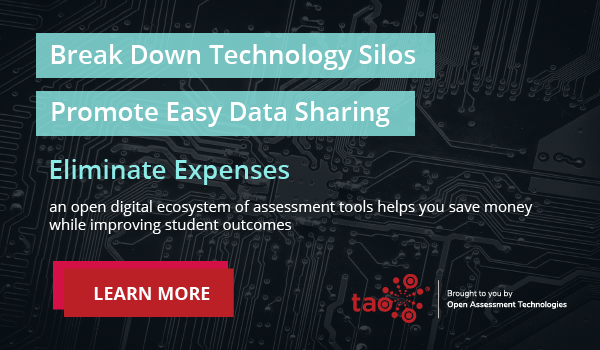This past year, the COVID-19 pandemic has marked a watershed event for global education, as schools in the US and across the world have quickly pivoted to some form of remote or hybrid education. In fact, at the peak of the pandemic, almost 93% of US households reported that their children engaged in some form of remote or hybrid education. As many US districts had been making this transition for the first time, the challenges that arose, including inequity in student access to technology, have held a light up against many of the fundamental issues that have long plagued our education system.
With these challenges in mind, as the 2020-21 school year comes to a close, US states and district education leaders are considering how to approach teaching in the fall semester. While the consensus amongst schools is to move safely back to the classroom, a report from RAND Corporation indicates that many district leaders agree that some form of distance learning will outlast the COVID-19 pandemic.
“Key findings: One in five districts were considering, planning to adopt, or had already adopted a virtual school or fully online option, while about one in ten have adopted or are planning to adopt a blended or hybrid form of instruction” – RAND Corporation
This continued adoption of hybrid education is largely due to the flexibility and personalization that the model allows for — but only when the right technology is in place. In this context, state and distinct leaders must focus on providing technology that ensures equitable opportunities for students to engage in online learning and assessment. In this post, we explore four technology must-haves to support hybrid education and empower teachers and students to effectively participate in distance learning.
Interoperable EdTech Software: The Key to Hybrid Education
The hallmark of hybrid education is flexibility. The fluctuating circumstances and changing student needs surrounding the pandemic have highlighted the need for schools to implement EdTech systems that can easily be adapted for functionality and connected with applications to form a complete learning ecosystem.
However, not all EdTech plays nicely with others. To implement a flexible hybrid learning system, education leaders must build their EdTech stack with technology built on IMS open interoperability standards. These standards ensure that an institution’s learning applications work together as a whole, and can simply plug directly into the digital ecosystem without compromising or losing any data.
In this context, interoperable EdTech is more cost-effective; an interoperable foundation gives schools the flexibility to easily evolve their existing stack by adding in new applications to fill any gaps in student needs, without the technical overhead. The streamlined transfer of data enabled by interoperable technology also simplifies reporting tasks and helps educators get a complete snapshot into students’ end-to-end learning processes.
Read our series here for a crash course on interoperability for distance learning.
WCAG Accessibility Compliance
As education leaders look for technology that extends equitable learning and assessment opportunities to all students, accessibility must be at the forefront. It’s estimated that about 1 in 5 people has a disability of some kind, which may impact their ability to effectively participate in online learning. The pandemic has shown us that the technology systems schools have in place are not always inclusive or accessible, disproportionately hindering certain students’ ability to demonstrate what they’ve learned. For distance and hybrid education, access and inclusivity when it comes to technology is paramount.
Education leaders need to select EdTech systems that adhere to the latest WCAG accessibility requirements (WCAG 2.1 AA) and section 508 guidelines to help ensure students have equal opportunity in hybrid education. The importance of user testing also cannot be overlooked. To offer truly accessible hybrid learning, schools must choose technology that has undergone extensive user testing with users of diverse backgrounds and abilities.
You can learn more about the TAO assessment platform’s native accessibility by downloading our free Accessibility Conformance Report.
Security Tools
One of the persistent concerns in hybrid education is maintaining data security and student privacy. An online assessment system, for example, collects a breadth of student data that is critical for optimizing teaching and learning. If this data were to be compromised, it would not only be detrimental to student progress, but could cost an institution significantly in time and legal fees. So, it’s crucial that any EdTech systems schools in place to collect and store student data have built-in security protocols to minimize this risk. The vendors for these systems also need to be able to provide detailed information on the storage of that data, and measures in place to prevent corruption.
Student facing security also must be considered. A common challenge in hybrid learning and assessment is mitigating student cheating attempts. Traditionally in the classroom, this would be accomplished via proctoring. Recently, however, many schools have been wary of remote video proctoring software as the facial recognition tools can often show racial bias. Parents are also concerned with the privacy and anxiety of their children as they are being watched or recorded. While the use of remote proctoring software for K12 distance learning is divisive amongst leaders in the education industry, there are still other secure ways to reduce student cheating and ensure student protection. These include:
- Multi-factor identity verification tools
- Lockdown browsers
- AI based proctoring that flags specific areas of cheating risk and allows for manual review
Assessment Grading Tools
Grading tests by hand and storing those results can quickly become an unwieldy process for teachers, especially in a hybrid education environment. When students are taking assessments or completing assignments online, having a system that allows for automated scoring of some questions significantly reduces the time and effort involved in grading and shortens the feedback timeline for students. While automatic grading can be appropriate for most types of test questions, like multiple choice or matching, open-ended responses still require human intervention. However, many testing systems do not provide a streamlined way to easily access and grade the results from long-form test questions, and the process can be quite lengthy.
A system that provides open-response scoring tools also helps simplify the grading process for teachers through organized workflows and user roles, and can allow for grading based on subject matter expertise. Open-response scoring tools, like TAO Grader, also reduce the operational overhead required when printing, organizing and scoring exams by hand. The most effective open response grading solutions offer:
- Team based scoring
- Scoring by subject or whole test
- Multi-trait scoring
- Rubric tools
- WCAG accessibility
- Multilingual capabilities
—
There is no denying the flexibility benefits of a hybrid educational model — when it’s done right. Today’s learners are constantly evolving, especially as technology available becomes more and more sophisticated. It’s crucial that the EdTech systems schools have in place are able to keep up with the changing needs of their students, teachers, and modern education as a whole.
Contact us to learn more about how you can implement digital assessment solutions that work seamlessly within your digital ecosystem and promote better teaching and learning outcomes.

